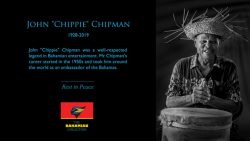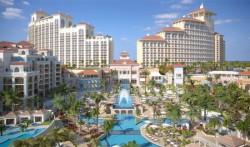The government has begun to scratch the surface in transforming the Clifton property, the first step in fulfilling its campaign promise of creating a National Heritage Park.
Part of reaching that goal is the plan to bring a resolution to Parliament this week seeking to secure a $24 million loan for the Clifton Heritage Authority.
The government is also expected to announce the names of those appointed to the Authority, a corporate body that would have the responsibility of owning, managing and preserving the historical and sacred site.
Attorney General Alfred Sears has also indicated that the Authority would also be responsible for the raising and management of funds, entering into archaeological and other joint ventures.
This latest move to turn the property into a National Park comes after the government finally paid Lady Nancy Oakes von Hoyningen-Huene for the 200-acre parcel of land, more than 15 years after the first Progressive Liberal Party government acquired the property that sits just on the western tip of New Providence. She died weeks later.
Minister of State for Finance James Smith has indicated that the nearly $20 million that was paid for the land came directly from the Treasury and that the government planned to issue bonds to reimburse the public purse.
Five years ago, some members of the Free National Movement Government supported turning a portion of the area into a multimillion-dollar gated community with then Deputy Prime Minister Frank Watson insisting that, “the development will bring a stream of returning tourists year after year.”
But in 1999 international archeologists discovered that the site held clues to prehistoric civilization and every historic era in The Bahamas up to post emancipation.
The archeological team unearthed artifacts eight centuries old, left behind by some of the country’s earliest settlers at the old Whylly plantation at Clifton.
Since then the archaeological finds have remained untouched.
Already local artists, Antonius Roberts and Tyrone Ferguson, have started transforming the siteᄡs natural resources based on the concepts of recycling and redemption.
Just overlooking the waterᄡs edge are tree trunks that Mr. Roberts has meticulously crafted into wooden sculptures that have adopted the image of human slaves.
“As opposed to bringing artworks out here, for me it was just no question that it was a perfect opportunity for us to help to partner with nature and transform these trees into what they wanted to become,” Mr. Roberts explained.
“And as a result of just appreciating the fact that there were 12 trees in this area, placed the way they were, leaning towards the ocean, there was no question that those trees wanted to be something and for me it was the perfect opportunity to make a significant contribution to our people, our ancestors.”
Mr. Roberts added that owning the Clifton property provides a perfect opportunity for Bahamians to start thinking seriously about heritage parks, artist colonies and creating an environment in which persons can simply come and celebrate “us.”
“For me, I feel that to have anything foreign or not for us or by us in this space would have to be a violation of this sacred space,” he said.
“So this was a wonderful opportunity – without being compensated – but just to come out here and use my talents in this space and Iᄡm hoping that others do likewiseナWe should not be afraid to allow this space to become what it wants to become.”
Mr. Ferguson said, “Right now, I can already envision a set of gates here that would be of such a spiritual nature that people would come from all over the world to come here.
“So I believe indeed that weᄡve just begun to scratch the surface of this place and I believe that my part at the end of the day is very minute because others will come and stand on my shoulders and make their contribution.”
Macushla N. Pinder, The Bahama Journal



